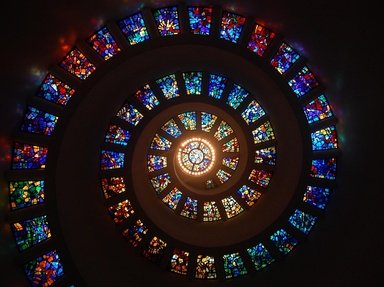Quiz Answer Key and Fun Facts
1. Religious syncretism is anything but a modern phenomenon. What major Eastern belief system was influenced for centuries by Ancient Greek culture?
2. Roman religion was syncretic almost by definition. The cult of which god of Indo-Iranian origin became widespread in the first centuries of the Christian era?
3. Gnosticism merged Christian elements with a dualistic cosmology. What Gnostic revival movement flourished in southern France between the 12th and the 14th century, and was eradicated by a crusade promoted by the Catholic Church?
4. In the late 16th century, Indian emperor Akbar promoted a religion called Din-i Ilahi that merged features of all of the empire's major religions. What ruling dynasty did he belong to?
5. Though similar in spelling and pronunciation, Hoodoo and Voodoo are not quite the same thing, as the former is a form of folk magic, and the latter a syncretic religion in its own right. Both of them, however, have their roots in which part of the world?
6. Candomblé is probably the most important of the syncretic religions that developed in Brazil as a consequence of the Atlantic slave trade. Which city in northeastern Brazil, also known as Bahia, is considered Candomblé's holy city?
7. Thanks to the popularity of reggae music, Rastafarianism has gained recognition outside its native Jamaica. Who is the Ras Tafari venerated as the religion's messiah?
8. The NAC, or Native American Church, blends elements of Christianity with traditional Native American beliefs. It is distinguished by the sacramental use of which well-known psychoactive substance?
9. The photo shows the elaborate Holy See Temple, the centre of the Cao Dai religion, a blend of Buddhism, Taoism and Confucianism with Roman Catholic influences. This religion is practiced mainly in which Southeast Asian country, a former French colony?
10. Which liberal religion, which welcomes members from every religious (or even non-religious) background, is symbolized by the logo of the flaming chalice shown in the photo?
Source: Author
LadyNym
This quiz was reviewed by FunTrivia editor
looney_tunes before going online.
Any errors found in FunTrivia content are routinely corrected through our feedback system.
